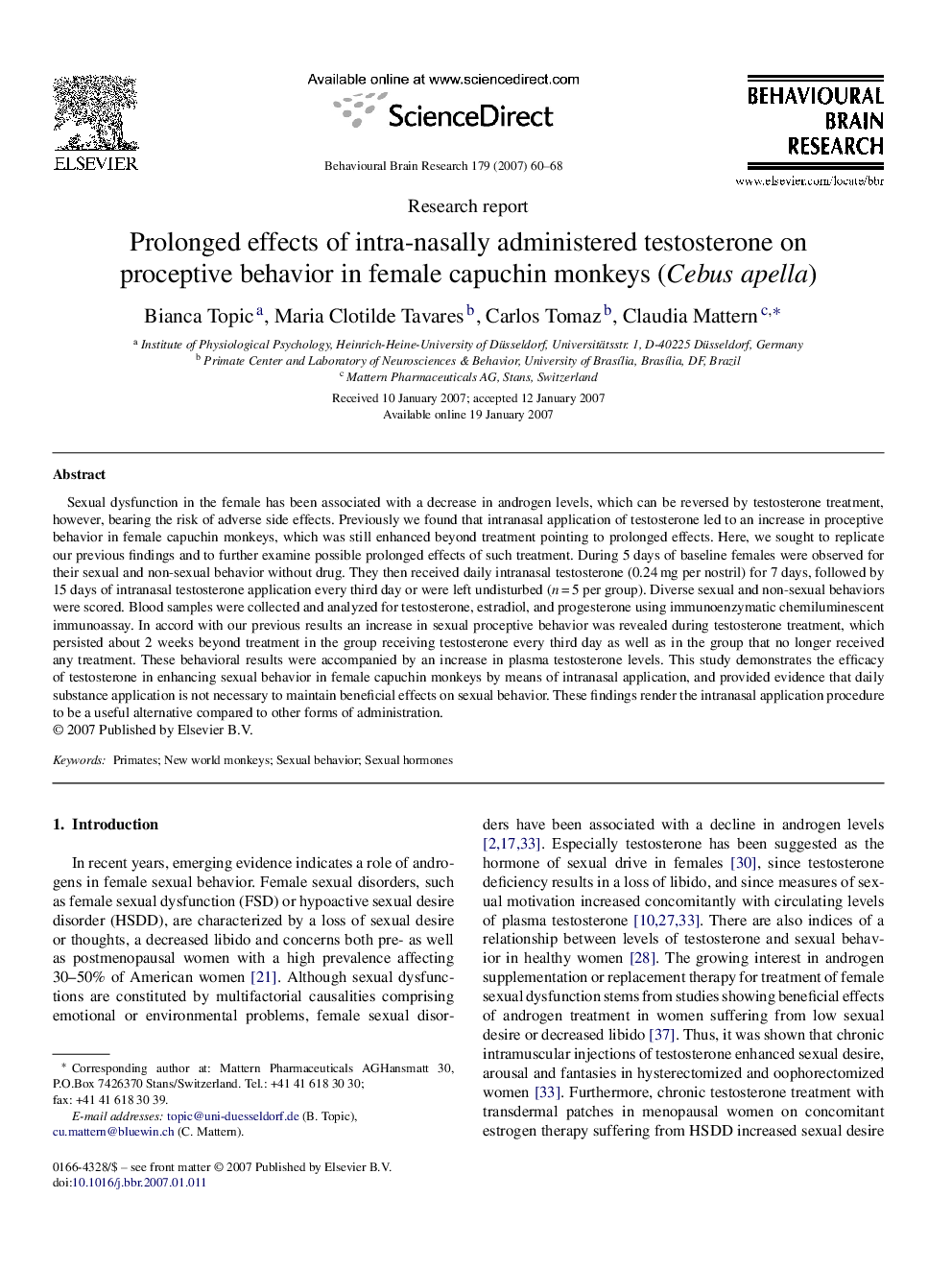| Article ID | Journal | Published Year | Pages | File Type |
|---|---|---|---|---|
| 4315772 | Behavioural Brain Research | 2007 | 9 Pages |
Sexual dysfunction in the female has been associated with a decrease in androgen levels, which can be reversed by testosterone treatment, however, bearing the risk of adverse side effects. Previously we found that intranasal application of testosterone led to an increase in proceptive behavior in female capuchin monkeys, which was still enhanced beyond treatment pointing to prolonged effects. Here, we sought to replicate our previous findings and to further examine possible prolonged effects of such treatment. During 5 days of baseline females were observed for their sexual and non-sexual behavior without drug. They then received daily intranasal testosterone (0.24 mg per nostril) for 7 days, followed by 15 days of intranasal testosterone application every third day or were left undisturbed (n = 5 per group). Diverse sexual and non-sexual behaviors were scored. Blood samples were collected and analyzed for testosterone, estradiol, and progesterone using immunoenzymatic chemiluminescent immunoassay. In accord with our previous results an increase in sexual proceptive behavior was revealed during testosterone treatment, which persisted about 2 weeks beyond treatment in the group receiving testosterone every third day as well as in the group that no longer received any treatment. These behavioral results were accompanied by an increase in plasma testosterone levels. This study demonstrates the efficacy of testosterone in enhancing sexual behavior in female capuchin monkeys by means of intranasal application, and provided evidence that daily substance application is not necessary to maintain beneficial effects on sexual behavior. These findings render the intranasal application procedure to be a useful alternative compared to other forms of administration.
